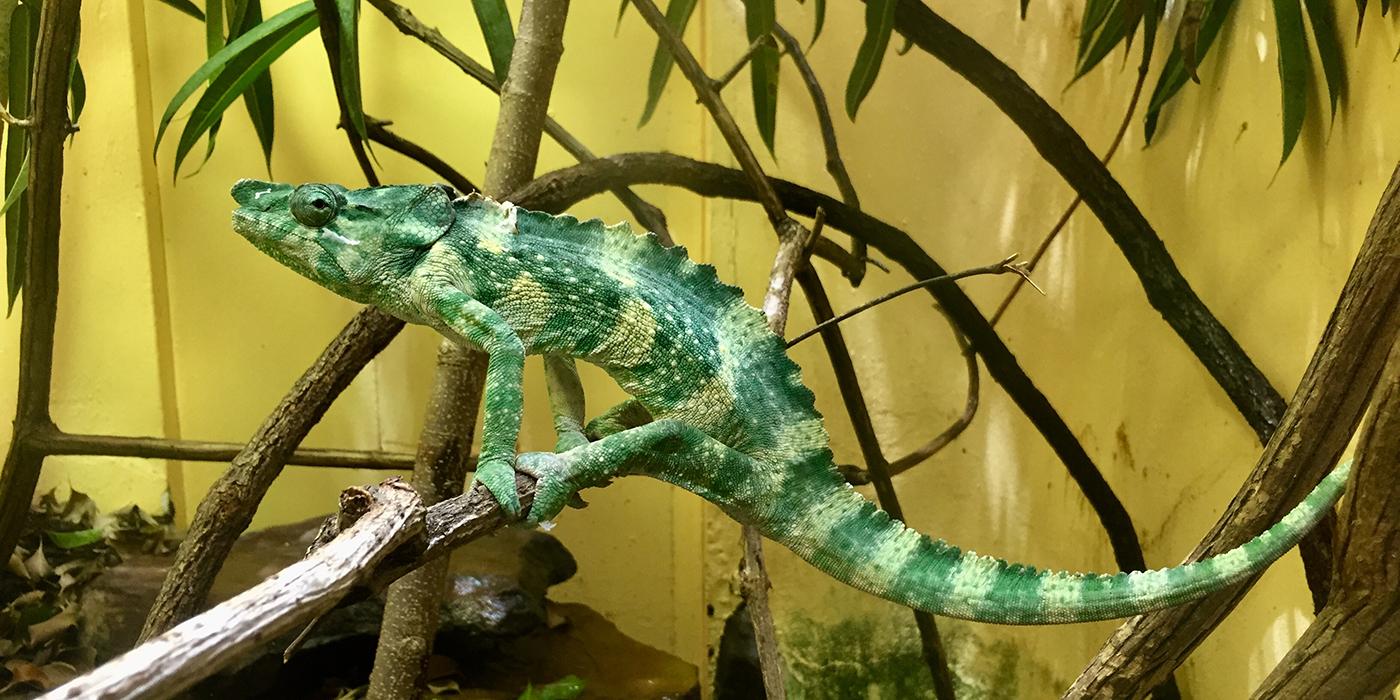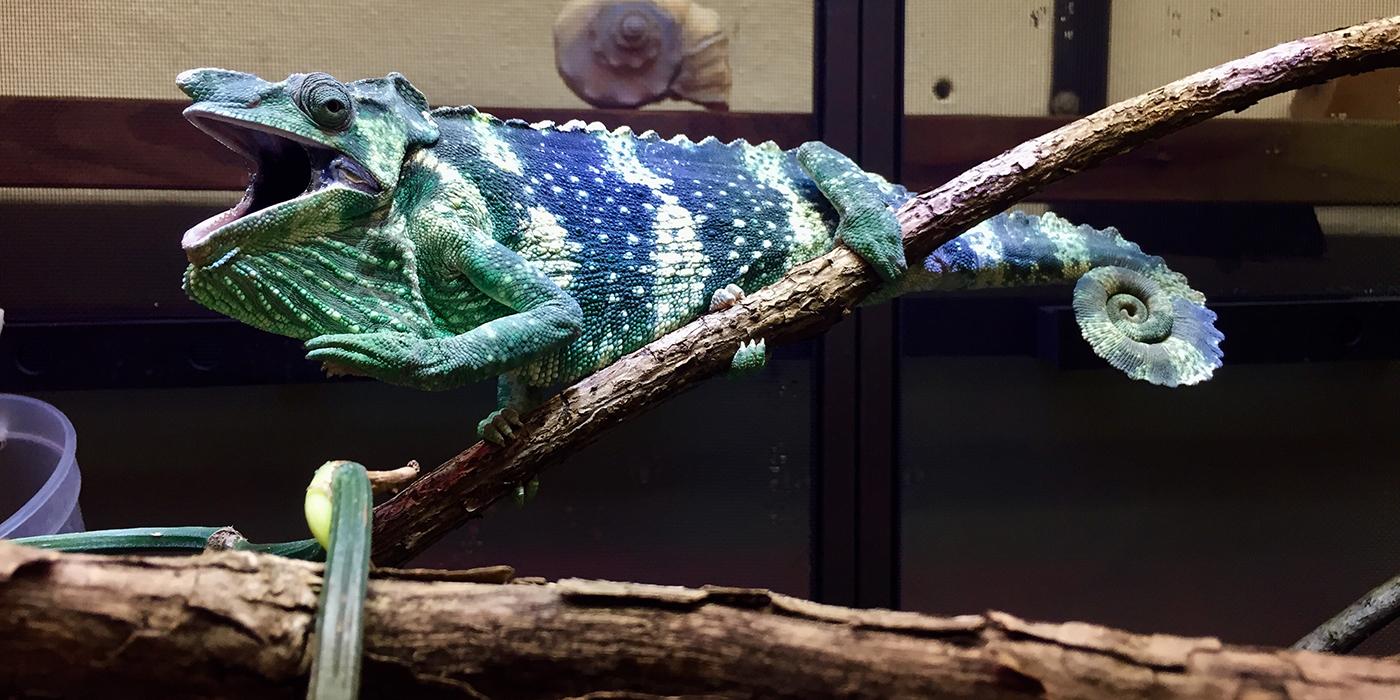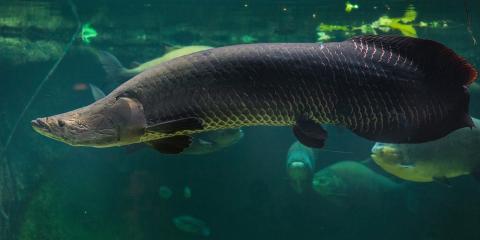Physical Description
The Mellers' chameleon is sometimes referred to as the giant one-horned chameleon, because of the small horn that protrudes from the tip of its snout. It has bright green and yellow stripes with brown and black spots along its body. These colors and patterns help it camouflage among the treetops of its native range.
Meller's chameleons can also change color. It is a common misconception that chameleons change color to blend in with their surroundings. A chameleon's natural coloring already camouflages it within its natural habitat. For these animals, changing color indicates stress or can be used as a communication tool. Chameleons also share another common characteristic—they can move each eye independently.
Size
These reptiles reach lengths of 2 to 2 1/2 feet (61 to 76 centimeters). Their tails are one-third the length of their bodies.
Native Habitat
Mellers' chameleons inhabit treetops within savanna, woodland and mountain regions of Malawi, Mozambique and Tanzania.
Lifespan
Meller's chameleons live up to 12 years in the wild.
Food/Eating Habits
These carnivores consume insects, smaller lizards, spiders, worms and caterpillars. They project their tongue to capture prey, extending it up to 20 inches (51 centimeters).
At the Smithsonian's National Zoo, Meller's chameleons eat crickets, mealworms and cockroaches.
Social Structure
Meller's chameleons live and hunt alone. They are diurnal, or most active during the day.
Reproduction and Development
After copulation, females can store sperm for several months and lay several clutches after breeding just one time. Females deposit their eggs into a hole in the ground, burying the eggs with leaves.
Conservation Efforts
Meller's chameleons are considered a species of least concern by the International Union for Conservation of Nature, as of a 2014 analysis. Their largest threat is collection for the pet trade.
Due to their size, the species is a desired exotic pet. Their population is currently thought to be stable throughout its range, but over time they could face the risk of being collected in unsustainable numbers.
Help this Species
- Practice ecotourism by being an advocate for the environment when you’re on vacation. During your travels, support, visit or volunteer with organizations that protect wildlife. Shop smart too! Avoid buying products made from animals, which could support poaching and the illegal wildlife trade.
- Choose your pets wisely, and do your research before bringing an animal home. Exotic animals don’t always make great pets. Many require special care and live for a long time. Tropical reptiles and small mammals are often traded internationally and may be victims of the illegal pet trade. Never release animals that have been kept as pets into the wild.
- Share the story of this animal with others. Simply raising awareness about this species can contribute to its overall protection.




